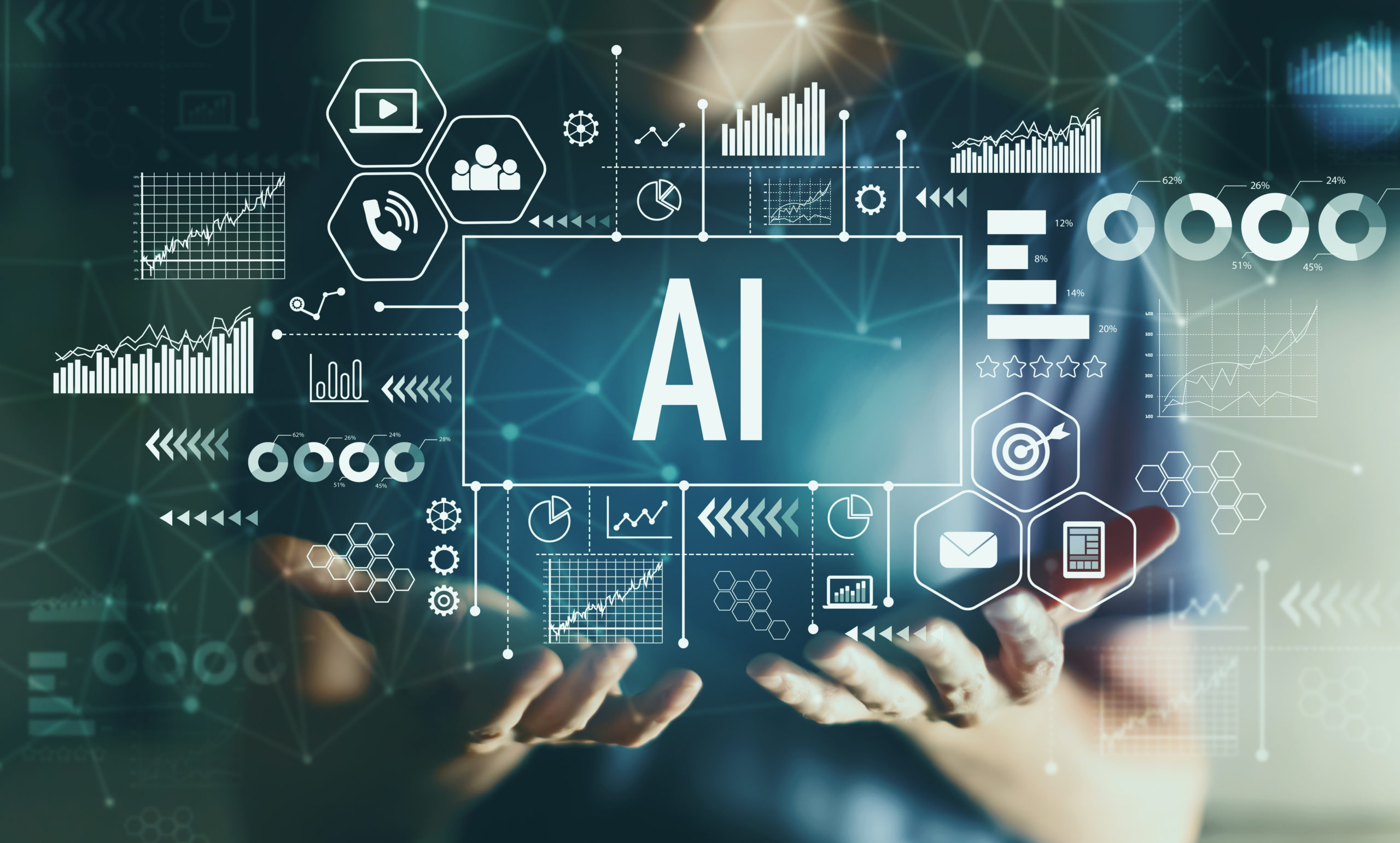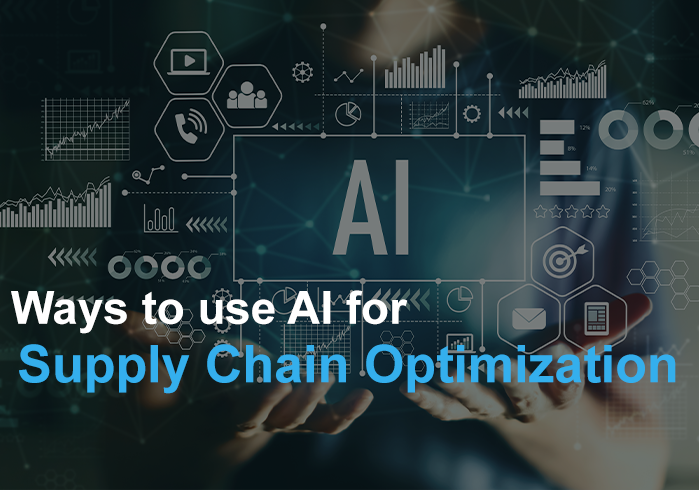
Despite all challenges, the supply chain industry is on the cusp of new dawn due to artificial intelligence (AI). Technology has made everything faster and more accessible. As a consequence, NVOCCs, logistics service providers, warehouse operators, and freight forwarders can improve their operations in terms of service quality, efficiency, and pace.
Currently, only about 12% of all supply chain professionals are using artificial intelligence for operational purposes. Nevertheless, about 60% of professionals in this industry expect to be doing so in the next half-decade. Gartner predicts that machine automation will become an increasingly crucial aspect of supply chain management.
Cloud computing and big data offer opportunities for many businesses across the globe. Logistics and supply chains fall in this category. The challenge is in identifying those aspects of operations that could benefit from artificial intelligence. Indeed, there is evidence that some companies are already using machines to complement or even supplement their human resources.
Those that have embraced artificial intelligence have reported reduced costs, improved productivity, and more controllable margins or error. In the logistics industry, even a minute saved can accrue significant cumulative benefits. Hence, the need to understand the operational use of artificial intelligence for competitiveness.
What is AI?
The main conceptualization of artificial intelligence is that of integrated technology that applies advanced analytics and logic-based techniques to interpret, map, support, and automate operational decisions through machine learning. In other words, it is intelligence that is operationalized by machines rather than human resources.
There is a broad range of categories of artificial intelligence; hence, its application can be complex. Many verticals are currently incorporating artificial intelligence to great effect. According to Accenture, artificial intelligence involves automation, augmentation, and innovation intelligently. These 3 concepts are at the heart of our understanding of artificial intelligence.
- Automation: This involves the use of computers and machines to achieve tasks that would require manual human action.
- Augmentation: This involves using technology and machine learning to facilitate human resources during the decision-making process.
- Innovation: This involves scaling operations in circumstances where human beings do not have the capabilities of achieving full functionality.
There are examples of artificial intelligence being used to achieve these goals. For example, an online movie platform can prepare a recommended list for users based on their profile and previous behavioral patterns. The government and social sector are using artificial intelligence to predict service needs and map usage patterns. The most influential artificial intelligence is often that which we do not see, but which impacts virtually every aspect of our lives.
How AI can be used in shipping and logistics
Despite the magnificent achievements of artificial intelligence, there is always room for growth. We are only beginning to understand the true value and potential of AI. Even the proliferation of technology in business is only in the earliest stages. This article explores 5 ways in which AI can be utilized.
Function 1: Predictive maintenance
One way to use artificial intelligence is for predictive maintenance. Instead of risking injuries, machines can be used to handle equipment. This is particularly true with equipment that is dangerous to humans. employees. Consider the operation of balers and forklifts. Because artificial intelligence tends to be exceptionally reliable when used correctly, it can reduce the risks associated with routine breakdowns. The need for correct use is of paramount importance. However, AI helps to mitigate the costs of operation and allows for urgent activities to be carried out. It can even replace the standard equipment when it breaks down.
All this helps to maintain productivity, even during periods of stress. Artificial intelligence may also be used to identify the condition of equipment to address wear and tear before it leads to a breakdown. This is done using sensors that work automatically. Maintenance is carried out at optimal stages rather than following a timetable that may be written without any insight into when and how a piece of equipment is going to break down.
Function 2: Optimizing manufacturing processes
Companies are optimizing their manufacturing processes through artificial intelligence. This involves the development of performance measures that are then recorded and monitored for any deviation from expected patterns. It is particularly important in supply chains where responsibilities and accountability can be muddled through complexity.
Using iterative product design, artificial intelligence can identify the perfect combination of value, cost, and quality on the assembly line. Improvements can then be made throughout the product life cycle. Some of the areas that may be examined include downtime, lead time, cycle duration, costs, the margin of error, quantities, and supplier reliability. The resultant management information is critical for continuous improvement.
One of the advantages of AI in this respect is that it can operate in the background without compromising current production. Information is gathered from multiple sources, validated, then analyzed to make appropriate adjustments to the manufacturing process. This is possible because artificial intelligence is now able to understand and map how human beings make decisions.
Function 3: Improving the accuracy of inventory management
Given the imperfections of human resource input into the inventory management system, artificial intelligence can fill the gap. In turn, this will reduce costs, waste, duplication, and redundancy. When the flow of goods in and out of factories is controlled through AI, there is increased productivity in terms of processing times for orders. The use of artificial intelligence is particularly relevant for large volume transactions.
Inventory management is enhanced by the application of AI in strategic processing points. For example, a comparative analysis of sales and inventory will raise red flags if there are shortages or gluts. Other companies use artificial intelligence to incorporate additional effects on demand such as weather and market trends. Hence, AI becomes a fully integrated approach to inventory management.
Companies that are using artificial intelligence do not have to suffer from inventory overstocking or missed responses to trends. The AI may recommend increasing the stocking of certain goods while others are reduced based on marketing data. Some companies integrate AI into physical counts so there is an early warning sign of when a count needs to be undertaken. Accurate data in real-time is the key to success.
Function 4: Enhancing safety
In an age of increased scrutiny over corporate social responsibility, artificial intelligence can play a role in improving health and safety. The use of automated tools allows for early and consistent planning. The machines that are deemed to be too dangerous for workers can be handled automatically using AI. The AI may be used to report unrecognized safety hazards promptly so that a contingency plan can be activated.
The parameters for maintaining inventory are well-curated and recorded using artificial intelligence. Hence, operations managers can make relevant decisions that support warehouse supervisors. The use of predictive models is particularly popular given the uncertainty that is prevalent in virtually all markets. Robots that are driven by artificial intelligence are often used to overcome known health and safety traps.
Function 5: Reducing margins of error
Another benefit of artificial intelligence is that it reduces the margin of error and hence the organization is not under pressure to be impossibly perfect. Supplies and logistics tend to have many unknowns that can prevent the proper fulfillment of contracts through simple failings, such as moving products in and out of the warehouse.
The management actions taken in warehouses will support additional processes, such as manifests and trend analyses. AI is applied as a deep learning network. In doing so, the business can examine various storage units before being compared to validation records from radiography images. This is incredibly important for reducing errors with the manifest.
Preparing your business for the age of AI
There is much more that can be achieved through the strategic use of artificial intelligence. Companies are always looking for ways to optimize their operations, and AI provides a strategic advantage. Nevertheless, the potential for adoption is not yet certain. Perhaps executives might be persuaded by some statistics indicating a marked improvement in operations following the implementation of artificial intelligence programs.
A survey carried out by McKinsey indicated that 61% of supply chain executives had reported decreased costs following the adoption of AI. Another 53% reported increased revenues. The business case has been made, and it is up to individual companies to continue adapting artificial intelligence to their advantage.
Wrapping up
Artificial intelligence seeks to study the workings of the human mind and to replicate them in operations. When done successfully, AI can reduce costs, increase revenue, and improve overall productivity. That is why many supply chain professionals are predicting that the use of AI is bound to expand rather than contract for the foreseeable future.


